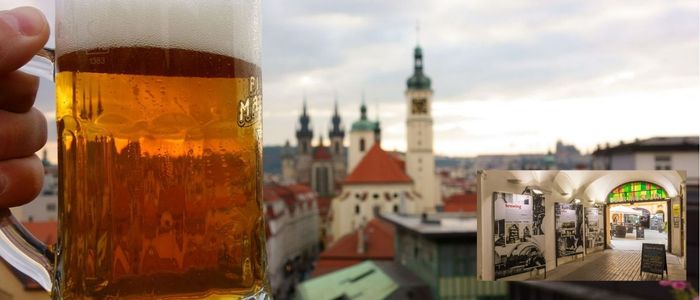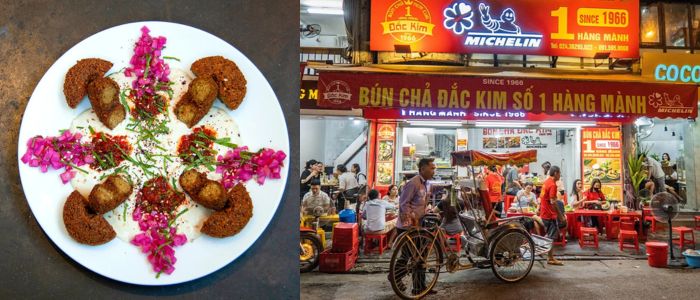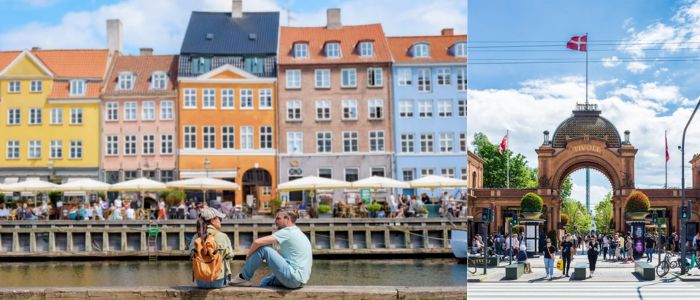It regularly hosts brewers from Australia, Canada, and the United States to learn more about Czech brewing traditions. The aim of this generous effort is simple to educate the world on how to properly appreciate Czech-style lager.
That very endeavor kicked off with beer — and at 10:39 a.m., no less, when 20 brewers met in a brewhouse bar in the middle of the Czech Republic. Liam Taheny, head brewer at Brightstar Brewing in South Australia was one of them. “The depth of beer knowledge around here is mind-boggling,” he said, noting that it was not only the brewers — even multigeneration Czechs speak about beer with expertise seldom found elsewhere on earth.
These visiting brewers were not just tasting the local beer. Over five days, they met with craft and large-scale brewers, hop farmers, bartenders, and pub owners. It’s all part of a long-term government strategy that’s using “beer diplomacy” to raise the profile of Czech lagers around the world.
A Local Legacy, With World-Class Aspirations
Beer has been brewed in the Czech Republic (including by Western Slavs who were ancestors of the Czechs) since at least the year 993. Nowadays, the country has the world’s highest beer consumption per capita – nearly double the runner-up, Austria.
In a lot of regions, beer is competitively priced, even cheaper than bottled water. But Czech beer, and particularly its lager, has for decades been overlooked on the international stage, overshadowed by Belgian ales and the march of IPAs.
That may be changing. Since 2019, Czech diplomats and brewers have sought to promote Czech-style lagers, which are typically crisp and full-bodied and have a bitter taste and, often, a buttery finish.
You can also identify them by the signature foamy head. Emulating effective cultural diplomacy examples, such as the successful culinary diplomacy story, the Czech Ministry of Agriculture has chosen beer as a way to bring the Czech Republic closer to other countries.
No official numbers are kept, but Czech-style lagers are appearing with much greater frequency in North American breweries now. Australia’s brewers have only recently been included in the program.
One evening, the brewers headed to Pioneer Beer in Žatec, which is the source of the coveted Saaz hops used in Czech-style lagers ever since Pilsner Urquell brewed the first golden lager, in 1842. The brewers talked at length with experts including Michal Havrda, head brewer at Pioneer Beer; Vaclav Berka, Pilsner Urquell’s retired beer master; and Adam Brož, current head brewer at Budvar in České Budějovice.
Mastering the Pour, Spreading the Word
Another company included on the tour was Lukr in Plzeň, makers of side-pull beer taps. These taps assist in the control of beer flow to the glass, creating the classic creamy head. Here’s Ondřej Rozsypal, 2022’s Master Bartender of the Year and an expert on Lukr tap, on how a good head adds creaminess and sweetness to your drink.
And since launching in 2015, Lukr has gone from selling a dozen taps a year in North America to 2,000 per year — a surge, Lubasky said, due in part to the Czech beer diplomacy push.
At Lokál, a popular gastropub in Prague, Lucie Janečková of the Institut Pivo explained her obsession with the proper beer pour. “It hurts to watch beer wasted by a bad pour,” she said, adding that Czech beer culture calls for reverence for the entire beer-serving ritual. Her institute also provides classes and beer tours for foreign brewers and bartenders.
One of those inspired was Meghan Michels, a brewer at Holy Mountain Brewing Company in Seattle. “They have been doing it for centuries,” she said. “Here, you need to come here to understand what a Czech lager is supposed to taste like.”
Ryan Moncrieff of Rafter R Brewing Company in Canada concurred. “The Czech beer we have in Canada doesn’t have a taste. It’s just not fresh,” he said. After all, he feels that to truly learn and duplicate the flavors that the country has to offer, it’s all about taking a bite over there.
Czech beer doesn’t travel well, and that fact, itself, would seem to challenge the notion that global trade can deliver everything, everywhere. If you want to truly understand the Czech lager experience, you have to go back to the well.
As the beer diplomacy initiative expands it isn’t just about spreading the Czech brewing know-how, but about getting the people of the world wanting to go and taste the real thing. With a new glass of lager in hand, Taheny put it best: “Here’s to whenever we end up back in the Czech Republic!”
Travel

Czech Republic Leads Global Effort in Beer Diplomacy

For the past six years, the Czech Republic has discreetly, subtly, reshaped how the world views — and drinks — beer. World-renowned as a leading beer tourism country, Belgium has begun a special kind of diplomacy.















